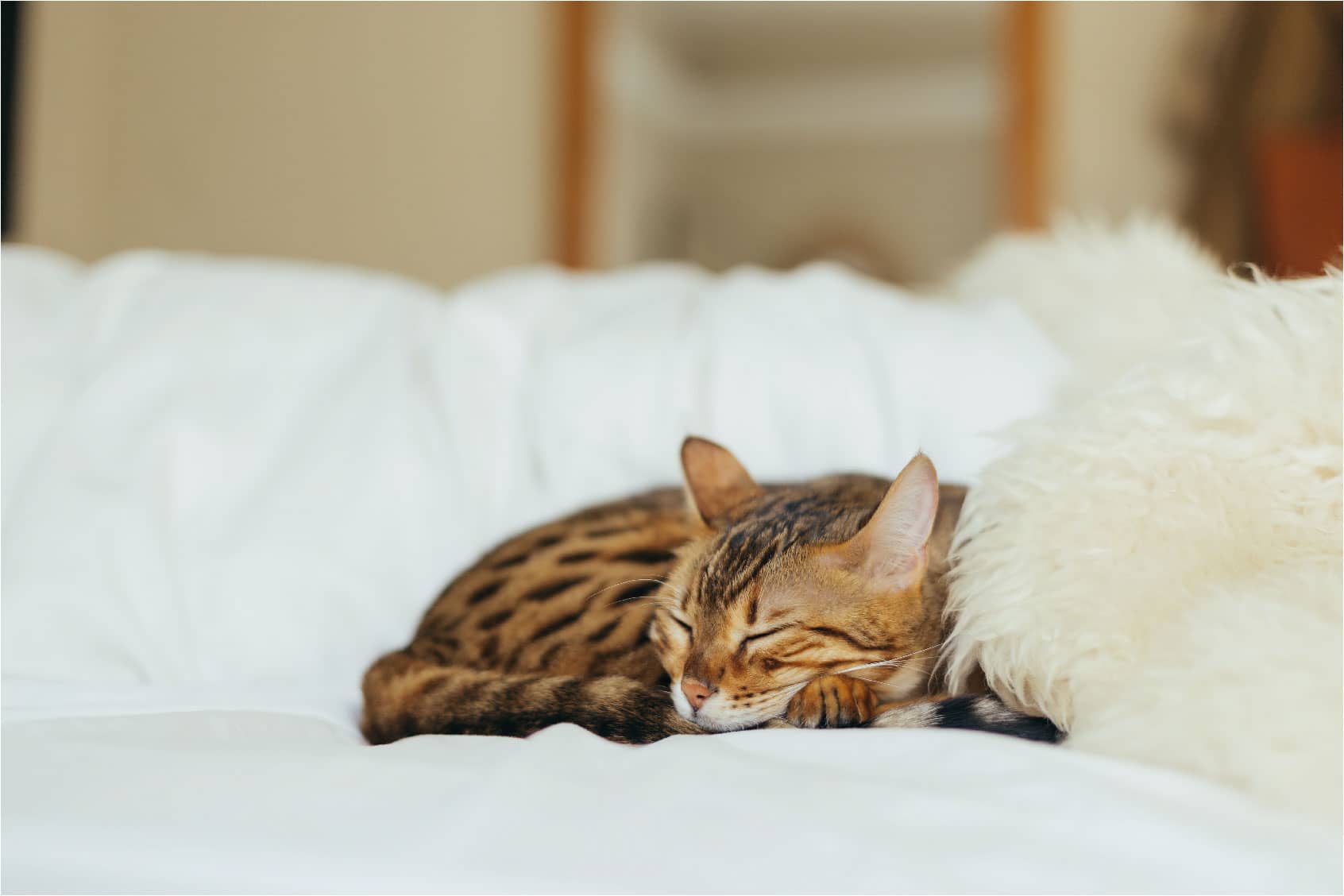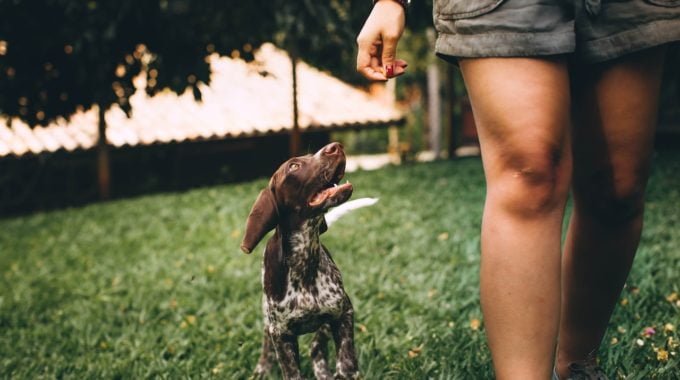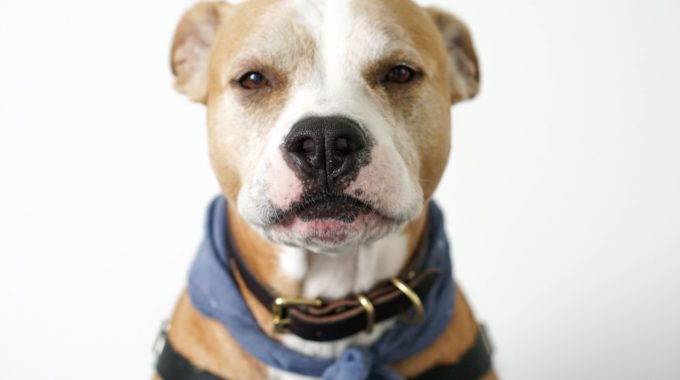If you’re interested in becoming a pet-friendly business, there are a number of factors, both…
Many pet owners have been there – you are so excited for your friend to meet your new pet, your friend can hardly contain their excitement and you have been messaging each other all day about the big introduction. But when they arrive, your usually bold and friendly pet is terrified and quickly retreats to a safe area that is way out of reach (and sometimes even sight!) of your disappointed visitor. You are left scratching your head as to why your pet is so scared of someone who clearly just wants to be friends. But why has this happened, and what can you do to help prepare your pet for future visitors? In this blog, we will take a look at why your pet is scared around guests, and what you can do to help.

Why is my pet scared of visitors?
It can be difficult to understand why your pet is so scared of visitors. After all, dogs are used to meeting other people whilst out on walks, and cats most likely see the neighbours and other people passing by (you may have even seen them allowing strangers to stroke them whilst outside!). So why are they so scared of new people inside the house?
To understand, try putting yourself in your pets’ position. You are most likely used to seeing other people as you go about your daily life out of the house, and have no concerns about coming across strangers in public places. However, imagine sitting in your bedroom, relaxing, when suddenly some unknown person appears – you have no idea who they are, why they are here or if they have good or bad intentions. Unknown intruders are pretty scary and, although you know that your grandma is not a threat, to your pet she is a stranger invading their territory who needs to be treated with caution! Add to this the fact that pets have much stronger senses than us, meaning that they will be overwhelmed with the new smells the visitor brings, and it becomes easier to understand why your pet may be fearful of strangers coming into your home. Additionally, visitors often bring with them objects such as delivery parcels, suitcases, or tools which in themselves are enough to frighten a more naturally nervous pet.
Many cats and dogs have no issue meeting visitors. However, due to the Covid-19 pandemic and subsequent restrictions on meeting within households, we are seeing an increase in the number of pets who find it hard to be around new visitors. This is particularly true of kittens and puppies who have spent the early months of their lives socializing only with their household members. Lacking interaction with a variety of strangers during this period of their life, makes it harder to get used to guests and visitors coming into their space. If pets are not introduced to visitors at an early age, they are understandably more apprehensive around visitors as an adult, which will start to present itself as we see an easing of lockdown restrictions. So don’t worry, it does not mean you are a bad pet owner if your pet is fearful of visitors, and you are certainly not alone.
How can I get my pet used to visitors?
Luckily, with a bit of time, patience, understanding, and dedication it is usually possible to make your pet more comfortable around visitors. As we begin to emerge from lockdown, it is the perfect time to start work on gradually desensitising your pet to strangers so that they are prepared to face the increasing amount of guests and visitors you will have over the coming months.
As dogs and cats tend to react differently to visitors and express their anxiety in distinct ways, we will take a look at the specific ways in which you can help them below. Whether you have a cat or a dog, you should speak to your guests before they visit to let them know about the training you are undergoing with your pet and advise them on how they should behave around them to help with their training and confidence building.
How to get your dog used to visitors
Most dogs react with excitement to the sound of strangers knocking on the door, but tend to calm down once they realise the person visiting is not a threat (or not that exciting!). However, for some dogs, the reaction to visitors can be extreme and long lasting, sometimes leading to aggression or nervous behaviour like barking, jumping, nipping, hiding or event toileting accidents. Below are tips to stop your dog from overreacting to visitors.
Teach your dog to not react to the doorbell/ knocking
It is normally the initial knock on the door that sparks the biggest reaction in dogs, sometimes making it difficult to get your dog to return to a calm state throughout the visit. To help overcome this, you should try and desensitise your dog to knocking or the doorbell. You can do this by enlisting the help of a friend, who should knock once on the door, but not come in. Ignore your dog’s reaction, and when he calms down, reward the good behaviour with a treat. Repeat this until your dog does not react to the knocking at all, and has learnt that knocking does not always mean someone is coming in!
Greet guests outside first
For some dogs, an unknown person entering their territory is very stressful. You can try and overcome this by introducing your dog to the visitors outside of the house, in a neutral location, so that your dog views them as less of a threat to their space. Once your dog is used to the visitors, let the visitors go inside and then follow on afterwards with your dog, so that your dog identifies that the visitors are now part of his territory.
Providing a safe space
You should create a safe space in your house where your dog can feel comfortable no matter what. This could be a room or corner away from any guests. To help your dog understand their safe space, you should train them to use it by providing toys and treats in the area, coupled with a command that tells them to go to that space. By teaching your pet to go to their safe space when there are guests, your dog will start to learn that visitors are not a threat, or a particularly interesting event.

How to get your cat used to visitors
It is a cat’s natural instinct to observe the things that worry them from a safe distance. If your cat runs and hides when new people come into your home, it’s because this observation has led them to conclude that they could be in danger. Therefore, it is important to make sure that your cat is able to hide if they need to, as depriving them of this natural protection mechanism could cause them a lot of distress. However, there are some things you can do to try and help your cat adapt to visitors and view them as less of a threat, which we will discuss below.
Behaviour modification techniques
Whilst cats aren’t exactly known for their trainability, it is possible to gradually modify certain behaviours with patience and consistency. To help your cat get used to visitors, you could ask a friend to come round to help you gradually retrain your cat’s reaction to visitors. Using a room your cat feels comfortable in (with suitable hiding places!), have your friend stand in the same room as far away from your cat as possible. Make sure the door to the room is open so that your cat can leave if they want to. Using some tasty treats, try and tempt your cat out of their hiding place. If your cat remains calm once they come out of the hiding place and acknowledge the visitor is there, reward this behaviour with more treats. Once your cat seems comfortable, you can start to gradually reduce the distance between the cat and the visitor, but be sure to increase the distance again if your cat becomes fearful. Eventually, you could start to introduce more than one visitor at a time.
This is not a technique that is likely to work overnight, but with frequent repetition and a couple of different friends acting as the visitor, you should be able to help your cat start to feel less threatened by new guests.
Set ground rules for visitors
If you have a particularly nervous or shy cat, boisterous visitors who do not respect your cat’s space will only make your pet become more fearful. Before your arranged visit, you should speak to your guests about how they should behave around your cat. These could include:
- Wait for the cat to approach them, rather than the other way round
- Have dedicated visitor-free rooms where guests can not go, so that your cat knows they are safe there
- If the cat decides to enter the room where the visitors are, stay seated and avoid sudden movements so you do not startle the cat
- Avoid prolonged eye contact with the cat as this can cause distress, because cats view eye contact as assertive or threatening
- Do not get your cat out from a hiding place against their will
Why has my pet’s behaviour changed?
As we mentioned above, after months of interaction with a limited number of people, especially if those months were formative ones, it is normal for your pet to be apprehensive around strangers coming into their space. By giving your pet the attention they need, and following the training tips above, they should be able to adapt to the new situation in no time.
However, if this anxious behaviour is new and your pet was previously confident around visitors in the home, an appointment with one of our expert vets at Knutsford Vets Surgery can identify whether there is an underlying medical cause of your pets new nervous behaviour. A whole host of conditions can cause your pet to become more anxious, such as changes in the nervous system, infectious diseases, and toxic conditions. Book your appointment online today.



